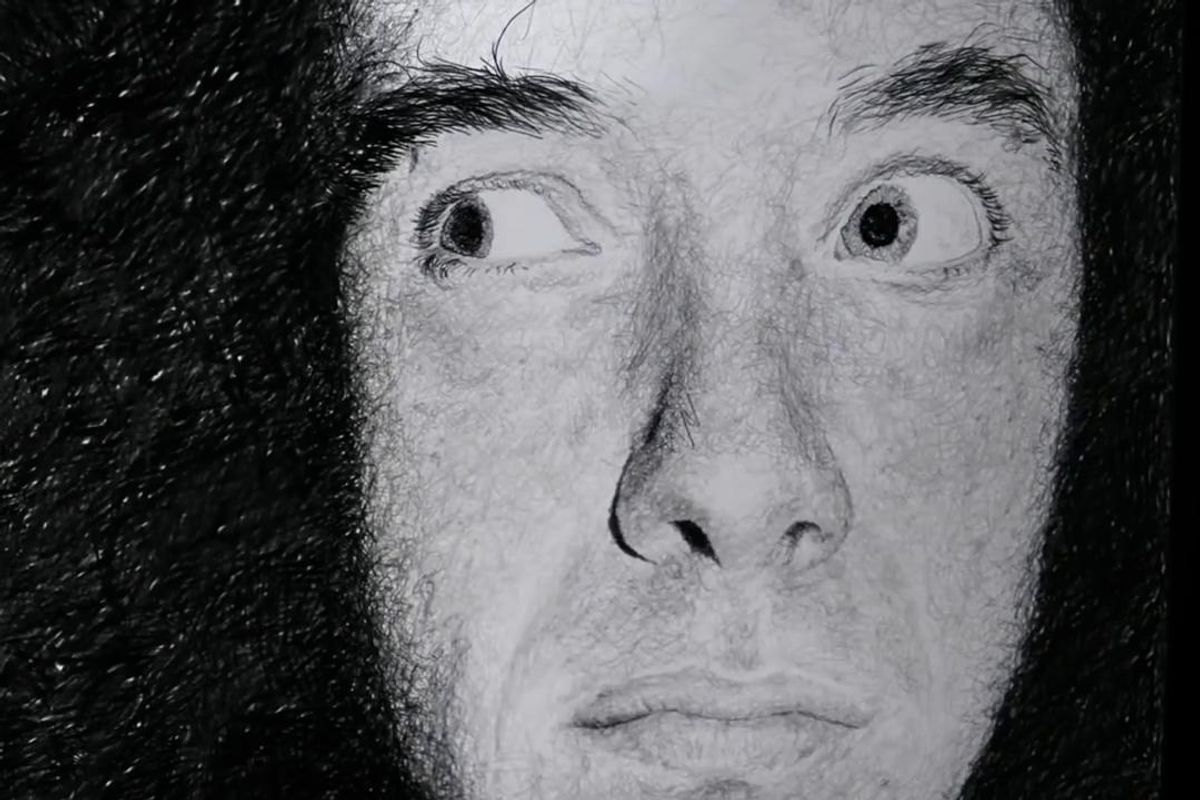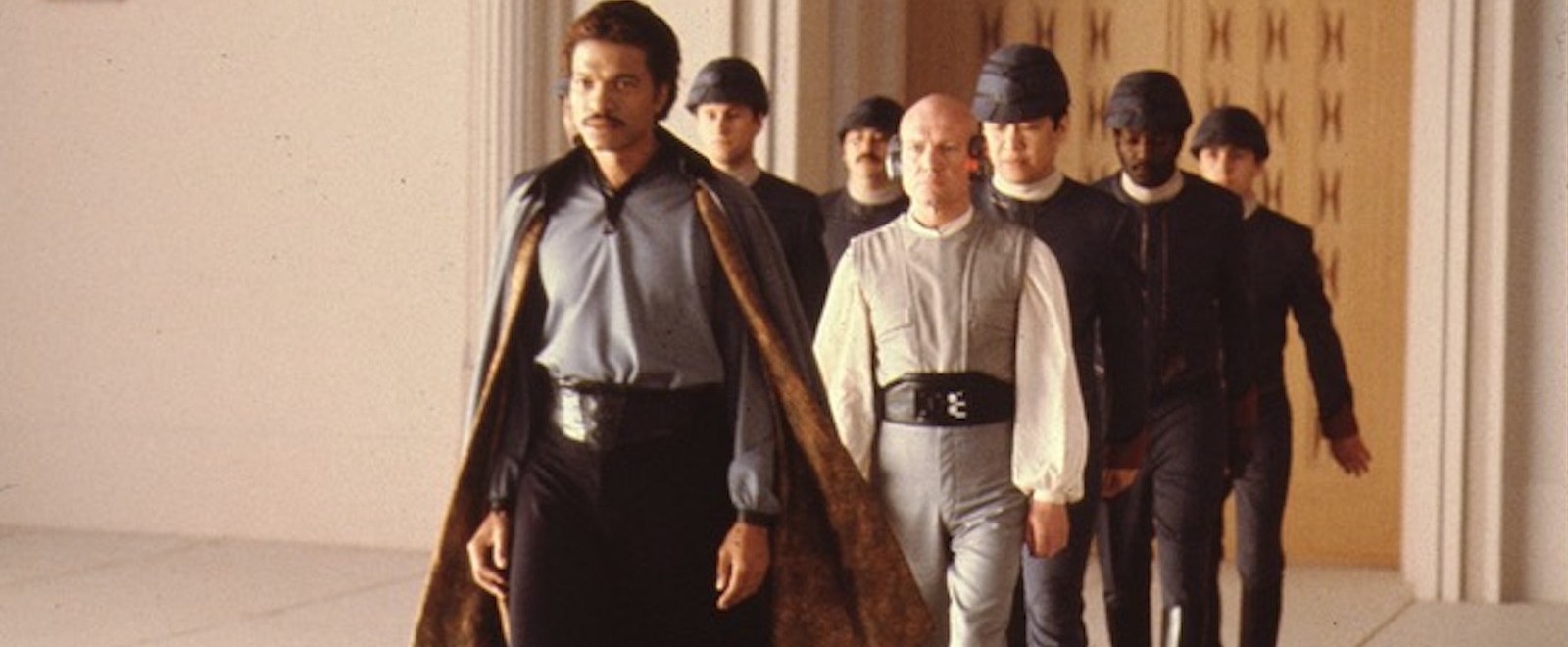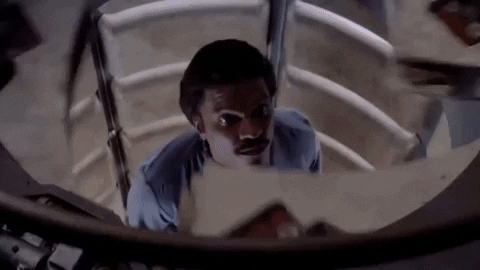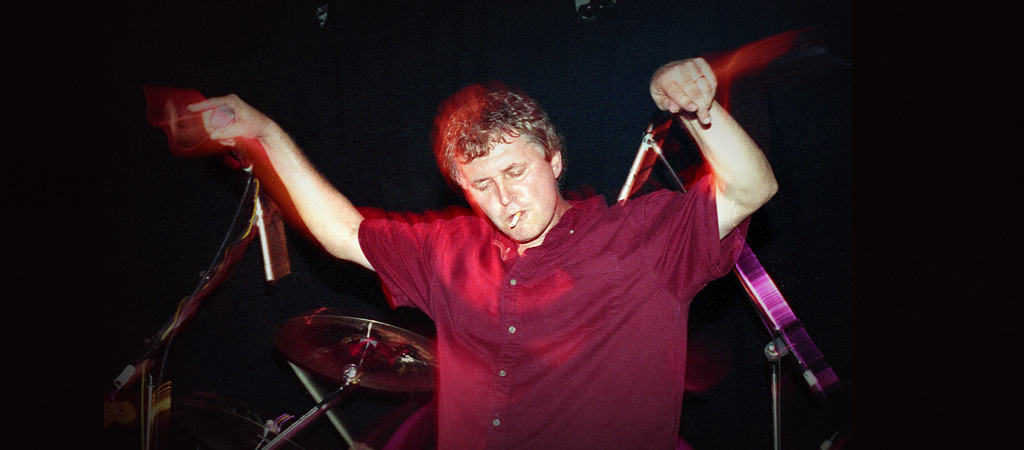On September 1st and 2nd, Guided By Voices will perform two concerts in their hometown of Dayton, Ohio. Joining them is an all-star cast of supporting bands old (Dinosaur Jr., Built To Spill), new (Wednesday, Kiwi Jr.) and somewhere in the middle (Heartless Bastards). This is appropriate, as the concerts mark the band’s 40th anniversary, and the bill reflects GBV’s longevity and unlikely career arc.
The fact is that GBV isn’t so much a band as it is an idea invented by Robert Pollard in 1983. A schoolteacher who started writing songs for fun as a music-obsessed teenager, Pollard made music in obscurity for nearly a decade before anyone outside of his immediate circle of friends and bandmates started to care. By the time he became the subject of magazine profiles in the mid-’90s, he was a husband and father whose 40th birthday loomed on the horizon. At that age, many musicians start to run out of artistic fuel. But finding inspiration was never a problem for Robert Pollard. He makes music like you and I produce carbon dioxide. He once described his process like this: “You get up in the morning. You take a shit. You write a song.” This explains why there are at least as many songs in Pollard’s life as they are mornings lived.
If you know anything about Guided By Voices, it’s probably at least one of the following factoids: 1) Their most famous recordings are “lo-fi,” which is a succinct way of saying “sonically reminiscent of a cassette that has been run through a washing machine for two hours”; 2) Their songs have very long and convoluted titles (like “Burning Flag Birthday Suit” or “14 Cheerleader Cold Front”); 3) They have a ton (and I mean a ton) of albums. That last one is GBV’s calling card and Achilles Heel. Pollard’s compulsion to create has resulted in a catalog that feels more spontaneous and alive than any of his contemporaries. But it also makes their catalog daunting to anyone who is not already a committed Pollard disciple. This has automatically limited the band’s reach. With Pavement, it’s easy to know where to start: Go to Slanted And Enchanted, and then proceed through the discography from there. With GBV, however — between all of the albums and EPs and solo albums and side projects — there are dozens upon dozens of releases to sift through.
How does one wade into the world of GBV? Is it an impossible task for a beginner? No! Not anymore! Not with this handy beginner’s guide! Let’s lay this out explicitly like a fruitcake!
GBV 101
A newcomer to Guided By Voices is bound to be intimidated by the seemingly endless number of possible entry points. But the good news is that practically everyone who cares about this band agrees on the GBV albums that are most essential. I refer to the mid-’90s trilogy composed of 1994’s Bee Thousand, 1995’s Alien Lanes, and 1996’s Under The Bushes Under The Stars. Reasonable people might disagree on which one of the three is the best, but heading here first is unquestionably the most obvious (and best) starting point for neophytes.
Bee Thousand is the one that turned GBV into an indie phenomenon. Released on the tiny independent label Scat, the album garnered ecstatic raves from critics — it even landed at No. 8 on the Village Voice’s Pazz & Jop critics poll, just ahead of major-label alt-rock behemoths like Nine Inch Nails’ The Downward Spiral, Beck’s Mellow Gold, Soundgarden’s Superunknown, and Green Day’s Dookie. Pollard conceived Bee Thousand as a kind of greatest hits album, in which he pulled songs from throughout his life in order to create the ultimate representation of his work up to that point. He wanted it to sound like a collection of fuzzed-out Beatles outtakes, though what Pollard actually presented was a classic rock album in which the bootleg is the record, like if Brian Wilson had just put out the demos of Pet Sounds in the place of the actual Pet Sounds.
As a lyricist, Pollard came on like a hybrid of mid-’60s Dylan at his most obscure and early ’70s Peter Gabriel at his most whimsical. He sang about elves, dreadful crows, and parallel lines on a slow decline. His talent for pure abstraction did not get in the way of delivering emotional payoffs — no matter how difficult it might be to explain on paper the resonance of a song like “Gold Heart Mountaintop Queen Directory,” on record it communicates a deeper and unknowable kind of power and truth, due almost entirely to the conviction of Pollard’s vocal and his commitment to world-building.
Mystery was key to GBV’s initial appeal. Pollard’s songs were catchy but inscrutable, both sonically and lyrically. The band members themselves were also enigmatic. Bee Thousand did not include a band photo, and the backstory about these workaday, 30something-year-old guys who magically transformed themselves into swaggering rock stars amid the shadows and grime of an Ohio garage lent them instant mystique. Even in the ’90s, there was suspicion about nepo babies always cornering the market on “next big thing” status. GBV was about as far removed from that as anyone could imagine, then or now. They were like the Beatles if the Beatles were hard-drinking Midwesterners who lived next door with mortgages and boring day jobs. They were, for lack of a better term, “authentic.”
Guided By Voices was already on the radar of Matador Records before Bee Thousand, thanks to the evangelizing of early super-fans like Matt Sweeney of Chavez as well as a career-making performance at the iconic Manhattan club CBGB’s in the summer of 1993. But GBV didn’t make their Matador debut until Alien Lanes, a 28-song epic that unfolds in a brisk 41 minutes. Once again forgoing a traditional recording studio, Pollard and his compatriots — including Tobin Sprout, his most important collaborator at the time and the band’s George Harrison figure — turned out songs in a primitive basement set-up at a rapid, beer-fueled pace. The final result is even more formally daring than Bee Thousand, piling a series of short pop songs on top of each other in a manner that sometimes seems reckless and chaotic. But this was by design, and if you get on its singular wavelength, listening to Alien Lanes feels like a record-collecting savant rearranging rock history and running it through a blender laced with sugar and shrapnel.
The final album in the mid-aughts trilogy, Under The Bushes Under The Stars, registered at the time as Pollard’s attempt to make a “big” rock record. Though when heard more than 25 years later, it sounds like a slightly (but only slightly) more polished update of the previous two albums. Perhaps because the release was followed by the dissolution of GBV’s “classic” lineup — not the “original” lineup, as we will discuss in a minute — Under The Bushes tends to not get the same shine as Bee Thousand and Alien Lanes. But in terms of songs, it is very much in the same league as those other records. “Cut-Out Witch,” “The Official Iron Man Rally Song,” “Bright Paper Werewolves,” “Your Name Is Wild,” “Don’t Stop Now” — these are rock anthems that gesture in the direction of the somewhat “normal” rock band that GBV became in the late ’90s without losing the “outsider art” quality that initially attracted admirers to Bee Thousand.
Beyond the mid-aughts trilogy, I would put three more albums in the GBV 101 category. Two of them immediately precede the trilogy: 1992’s Propeller and 1993’s Vampire On Titus. While Bee Thousand broke them with the wider critical community, Propeller and Vampire On Titus were the ones that got early tastemakers like Sweeney on board, setting up that gig at CBGB’s during the CMJ Festival. At the time, Guided By Voices was such a non-entity in their own town that they hadn’t played live in six years. The reception was so dispiriting that Pollard originally conceived Propeller as his swan song. Though you wouldn’t know it listening to the record — part of the reason Propeller broke through is that along with being GBV’s most consistent collection of songs up that point, it has an arena-rock exuberance that the band’s early work doesn’t have, starting with the “G!B!V!” chant that opens the first track, “Over The Neptune/Mesh Gear Fox.”
Pollard disbanded Guided By Voices after Propeller, so when the album caught on outside of Dayton he was left to record Vampire On Titus with his brother Jim and his faithful sidekick Tobin Sprout. Because they had no drummer, Pollard took over timekeeping duties himself, giving the songs a caveman stomp that makes Meg White sound like Buddy Rich. The album overall is noisy and dissonant, plugging into the same “bleak small-town degradation” vibe of GBV’s pre-indie fame work.
The last album that belongs in GBV 101 is the best entry point for listeners who can’t stomach the lo-fi sonics of the aforementioned records: 2001’s Isolation Drills. After a series of records in the late ’90s in which Pollard tried to make himself into a relatively conventional indie-rock star on par with peers like Stephen Malkmus or Wayne Coyne, Isolation Drills arrived as the most complete realization of “normal rock band” GBV. Now, instead of creating a bombed-out bootleg spin on Who’s Next, Pollard made rock music nearly as towering and hard-hitting as any classic-rock masterpiece. It was a triumph in nearly every way except for (possibly) the most crucial, at least from a commercial perspective: It didn’t make GBV an arena-rock band (or even a “large theater” band). After Isolation Drills, Pollard stop trying to be a rock star and focused on plying his committed cult following with an endless bounty of songs.
In the 2005 book Guided By Voices: A Brief History, author (and one-time GBV bassist) James Greer tracks down Pete Townshend to ask his opinion of GBV. Pete, sadly, says the band is not “my cup of tea,” which prompts a dismissive (and defensive) reaction from Pollard. (Pollard has also ranted about this on stage.) Hopefully, Pete will one day hear Isolation Drills.
GBV ADVANCED STUDIES
I discovered GBV from reading the review of Alien Lanes in Rolling Stone, which supposedly is the longest album review in the publication’s history. This is partly due to the review also covering Box, a collection of the band’s first four albums: 1987’s Devil Between My Toes, 1988’s Sandbox, 1989’s Self-Inflicted Aerial Nostalgia, and 1990’s Same Place The Fly Got Smashed, as well as the early outtakes collection King Shit And The Golden Boys. (It does not include 1986’s Forever Since Breakfast, their debut EP later packaged in the 2003 box set Hardcore UFOs: Revelations, Epiphanies and Fast Food in the Western Hemisphere.) The Guided By Voices you hear on those early albums is much different from the one that rose to prominence in the mid-’90s. Starting out on Forever Since Breakfast as a jangly power-pop group clearly indebted to R.E.M., GBV take a darker, artier turn on the Box era albums as Pollard tries to master his “blue collar loser genius” aesthetic on a part-time basis while juggling family, his teaching job, and a constantly shifting lineup of support musicians. At this time, there were no hip NYC scenesters around to assure him his music was amazing. On the contrary, Pollard’s obsession with songwriting and making records prompted skepticism and even scorn from most of his peers in Dayton. And you can hear that in the music, which exudes alienation even on the poppy numbers. At times, Self-Inflicted Aerial Nostalgia sounds like Joy Division’s Closer if it had been transplanted to Ohio, particularly the menacing lead-off track “The Future Is In Eggs.”
Pollard literalized the musical dislocation of Self-Inflicted Aerial Nostalgia on the next album, crafting Same Place The Fly Got Smashed as a concept LP about an alcoholic who commits murder and is subsequently executed. The most pivotal track is “Drinker’s Peace,” which opens with Pollard singing, “At times I wish I was dead.” It would be a mistake to interpret this as a self-portrait, but there is nevertheless a striking contrast here between the “shit yeah, it’s cool!”-style joy of the mid-’90s material (as well as much of the work that came afterward) and the music Pollard made when his talent was unrecognized and denigrated.
This period of GBV is fascinating for many reasons, but the primary one for me is that it shows from the beginning that Robert Pollard was a unique artist. While he was obsessed with rock history, he never recycled sounds of the past in the manner of so many trad-rock groups. Even when GBV draws upon their most obvious influences — The Beatles, The Who, Wire, Genesis — they never sound like any of those bands. Pollard is just as difficult to pin down philosophically as a beer-drinking ex-jock who also has encyclopedic knowledge of every important (and important only to him) art-rock record ever made. Ass-kicking and cerebral, conceptual and instinctual, intellectual and anti-intellectual — GBV’s music is neither broadly appealing heartland rock nor niche-y cool-kid indie but something that resolutely exists outside of that binary. It has one foot in the bowling alley, and another foot in the art gallery.
Of course, early GBV is where you should end up after digesting the best of the later work. On that count, I’m going to stump for two underrated late ’90s LPs, 1997’s Mag Earwhig! and 1999’s Do The Collapse. This is where Pollard tinkered with the sort of “chunky rock jams” template that he perfected on Isolation Drills without completely shedding the micro-sized digressions that defined the mid-’90s period. It was during this time that Pollard also hooked up with guitarist Doug Gillard, his most important bandmate after Tobin Sprout and a similarly reliable foil to his most indulgent tendencies. I started attending GBV shows regularly around this time, and no matter how drunk the rest of the band might get on stage Gillard always functioned as a kind of designated driver, making sure to guide the band back from sloshed to splendid in the space of a single song as needed.
Gillard’s first run with Pollard in GBV carried through two fine post-Isolation Drills efforts, 2002’s Universal Truths And Cycles and 2003’s Earthquake Glue. The following year, Pollard disbanded GBV and focused on his solo career and various side projects for several years. (Even though, in reality, there is virtually no difference between his GBV work and his solo work — it’s all essentially Robert Pollard music.) In 2010, he reformed the “classic” lineup of GBV with Sprout, guitarist Mitch Mitchell, bassist Greg Demos, and drummer Kevin Fennell, though that eventually folded again after a few years. (The best album from this era, 2012’s Class Clown Spots A UFO, nevertheless isn’t quite as exciting as seeing this incarnation of the band live, especially for those of us who thought we would never see it.)
Here’s one of the many points in GBV history where things threaten to become way too convoluted for a newcomer (or even a casual fan) to follow. For now, I’m going to be slightly reductive and point out that Gillard re-entered the GBV orbit in 2016 as a last-minute sub in the current GBV lineup formed by Pollard after he made Please Be Honest, a quite good sorta-comeback he recorded by himself under the band name. With Gillard back in the fold, GBV has had what many diehards consider to be a late-career golden age, with 2018’s Space Gun, 2021’s Earth Man Blues, and 2022’s Tremblers And Goggles By Rank delivering especially focused and cogent rock songs within enjoyably sprawling contexts and concepts.
GBV PH.D
Like I said, all GBV music is Robert Pollard music, and vice versa. Which means if you have gotten this far without losing your appetite for more GBV music, you will definitely want to dig into his solo records. Two of Pollard’s best, 1996’s Not In My Airforce and 1998’s Waved Out, sound like companions to the GBV records he was making at the time. Sprout also put out several fine solo efforts in the wake of leaving GBV in 1996, the best of which is 1997’s Moonflower Plastic, in which he sets his amiably reedy tenor against stately piano melodies to create some of the most flat-out most beautiful music to come out of the GBV-adjacent canon.
The line between GBV and Pollard gets even blurrier with 1999’s Speak Kindly Of Your Volunteer Fire Department, an excellent collection co-credited to Gillard that might be even better than the two late ’90s GBV albums from this period. Certainly “Pop Zeus” sounds like a potential hit that never was.
Speak Kindly is among the earliest releases of the Fading Captain Series, a group of 44 albums released between 1999 and 2007 that became a clearinghouse for Pollard’s wildest and least commercial ideas. At times during this period, Pollard seemed more invested in his experiments than his “proper” band. For every album like 2001’s relatively straightforward and rocking Choreographed Man Of War, there are scores of side projects that sound more in line with the cacophonous GBV albums of the ’80s than the contemporary GBV of the early aughts. Even devotees by now had trouble keeping up with, say, the latest Lexo And The Leapers release, though sometimes the most committed were rewarded with a song as great as “Alone, Stinking And Unafraid” from 1999’s Ask Them.
If the prospect of 44 albums released in an eight-year period as a side hustle sounds daunting, allow me to introduce you to 2000’s Suitcase: Failed Experiments And Trashed Aircraft, a 100-song box set compiling tracks going back to the mid-’70s (including Pollard’s earliest recorded material) that somehow hadn’t already ended up on a GBV-affiliated album. It goes without saying that Suitcase (or the three other editions that followed) is not for anyone who is not already maniacally captivated by Pollard’s inexhaustible muse. The fabricated band names given to each individual track speak to the hyper-insularity of the exercise. But for those who are maniacally captivated by Pollard’s inexhaustible muse, it’s hard not to admire this man’s unshakable faith in his ability to create musical worlds that are constantly surprising and utterly idiosyncratic.
EXTRA CREDIT
Banks Tarver’s 1996 documentary Watch Me Jumpstart is hardly comprehensive — it’s only 36 minutes long, or about the length of a typical GBV album — but it shows Pollard and the “classic” lineup in their initial flash of indie fame as well as the guys hanging out in Dayton. For a more in-depth history of the band, Matthew Cutter’s 2018 biography Closer You Are: The Story Of Robert Pollard and Guided By Voices is a good read, particularly on those mysterious pre-Bee Thousand years.
For all of the music that Pollard has committed to tape, a case could be made that Guided By Voices is best experienced live. The band has released several live albums, though the one that’s most readily available, 2007’s Live From Austin, TX, is by far the weakest. Two semi-bootleg live LPs from the mid-’90s, 1994’s Crying Your Knife Away and 1996’s Jellyfish Reflector, showcase the classic lineup’s boozy camaraderie and offhand rock power, though they can be hard to track down. As for the current lineup, 2018’s Ogre’s Trumpet is a triumph, though it also has limited availability.
And then there’s Relaxation Of The Asshole, the infamous 2005 compilation of Pollard’s “best” drunken stage patter that was awarded a rare 0.0 from Pitchfork. Does the album deserve it? Yes. Do I own it on vinyl? Also yes.



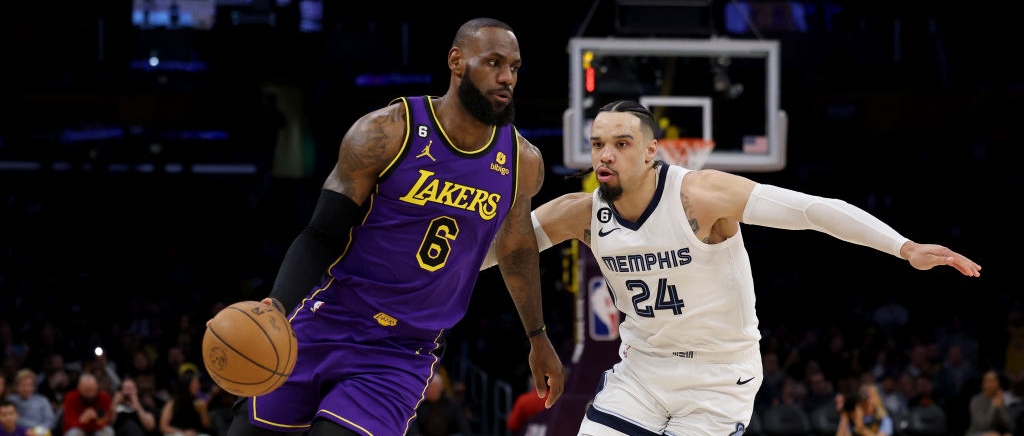

 (@fwj6y)
(@fwj6y) 




 (@jastuart68)
(@jastuart68)  (@Allenmyouii)
(@Allenmyouii)  (@RatiodByBryce)
(@RatiodByBryce)  (@cc33_rl)
(@cc33_rl) 